Articles on Animation &Independent Animation 28 Apr 2010 07:32 am
Raoul Servais
The following is an article by the animation artist Raoul Servais. He was a major force in the international scene when this article was published in Animafilm #1 back in 1979.
by Raoul Servais
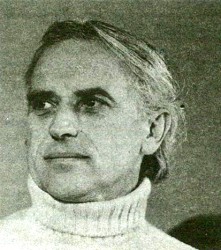 I have been asked to present my opinions on questions which determine the relationship between the author of an animated film and his profession, and the ensuing interdependences: I will,confine myself to outlining an opinion which is perhaps applicable only to artists working in more or less similar conditions. The relationship between the author of an animated film and his work differs so greatly in various countries, depending on socio-economic conditions, the organizational structure of production and, of course, individual talent, that it would be risky to proclaim a universal opinion applicable to all cases.
I have been asked to present my opinions on questions which determine the relationship between the author of an animated film and his profession, and the ensuing interdependences: I will,confine myself to outlining an opinion which is perhaps applicable only to artists working in more or less similar conditions. The relationship between the author of an animated film and his work differs so greatly in various countries, depending on socio-economic conditions, the organizational structure of production and, of course, individual talent, that it would be risky to proclaim a universal opinion applicable to all cases.
The first problem that was suggested to me as a subject for reflection is the relationship between the author of a film and the techniques used in that discipline of art. The “picture-by-picture” art is undoubtedly an artistic profession that pays an extremely high tribute to technology. After all, cinematography is, by its very nature, a phenomenon produced by mechanical optical instruments. But the scientific aspect of this assertion about an art discipline is not confined to mechanics and optics; it also includes electricity, chemistry, physics and electro-acoustics. Cinematography, which is going through a process of technological changes, now makes use of new means of expression offered by modern audio-visual techniques that have arisen as a result of the vigorous development of electronics.
Emphasis has been placed on two manifestations of man’s genius which at first glance seem to be poles apart and concern different interests. On the one hand we have artistic work with everything that can be provided by imagination, poetry, lyricism, spontaneity, subtlety and improvisation; on the etching needle, that is, people whose scientific knowledge is confined to Chinese white or cobalt blue, seems to be incompatible with what we expect of a film maker: profound knowledge of the technical possibilities of his profession. In spite of this, the overwhelming majority of animated film authors are students of the brush, the chisel or the etching needle, that is, people whose scientific knowledge is confined to Chinese white or cobalt blue.
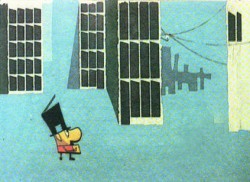 I am of course exaggerating for like everybody else I do not deny that some outstanding animated film masters are brilliant scientists; besides, it is a known fact that extremes meet; mathematics is said to end in poetry, a phenomenon I have not experienced myself so far. Nevertheless, it is a fact that the authors of animated films are mainly former painters, engravers, graphic artists, book illustrators or sculptors who have very little, if any, knowledge of technology. I know many animators who though
I am of course exaggerating for like everybody else I do not deny that some outstanding animated film masters are brilliant scientists; besides, it is a known fact that extremes meet; mathematics is said to end in poetry, a phenomenon I have not experienced myself so far. Nevertheless, it is a fact that the authors of animated films are mainly former painters, engravers, graphic artists, book illustrators or sculptors who have very little, if any, knowledge of technology. I know many animators who though
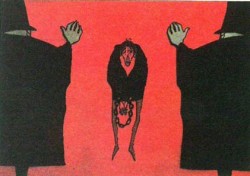 known for a long time have remained completely ignorant of technology, either because they do not take any interest in the subject or because they do not want to fritter away their energy. These artists do however turn to technology for help when they find this necessary or when this is indispensable for the implementation of their ambitious plans or useful in commercial production. I cannot, however, help thinking that they lack a certain dimension, for knowledge of one’s instrument can also be a source of creative inspiration. It is indispensable if one wants to experiment in the field of visual arts.
known for a long time have remained completely ignorant of technology, either because they do not take any interest in the subject or because they do not want to fritter away their energy. These artists do however turn to technology for help when they find this necessary or when this is indispensable for the implementation of their ambitious plans or useful in commercial production. I cannot, however, help thinking that they lack a certain dimension, for knowledge of one’s instrument can also be a source of creative inspiration. It is indispensable if one wants to experiment in the field of visual arts.
I do not think however that scientific talent is an absolute necessity to master technology. I may serve as an example to many artists in this respect. This allows me to speak of myself with less restraint and fewer scruples.
It is my firm conviction that youthful interest in technology is due to two different reasons. The first is pure scientific curiosity which forces us to master our tool by learning its anatomy and the way it works. A child that dismantles an alarm clock part by part in order to get acquainted with its mechanism could serve as an example here. The other reason – and this was my case – is the surprise an artist feels when he realizes the complexity of the instrument which allows him to put his artistic ambitions into effect. I was still a little boy (I was 5, if I remember correctly) when I fell under the spell of cinematography. I had been making drawings for a number of days and my grafitti combined to make a tale. I also liked to tell stories. One day my father, who had a Pathe-Baby projector, showed me the animated cartoon Felix the Cat. The film aroused my admiration and became a spark which helped me to realize my mission. Without my father’s knowledge I would unwind and analyse films in order to understand the mystery of motion, but I never took the trouble to see what a projector looked like inside. This instrument – and it was a holy thing for me – was like Pandora’s box which you could not open without running the risk of seeing the charm disappear. I still have a similar approach to the instrument which has produced the fruit of my reflections. I simply worshipped the old Debrie camera with which I made five or six films and I am still full of admiration for this sophisticated instrument. I have always been my own cameraman and I know the possibilities and limitations of the cameras I use; the invisible wave-like murmur of their mechanism tells me when a breakdown will occur. But once the camera goes out of order and the defect is of a mechanical or electric nature, I am completely at a loss and cannot understand what has happened.
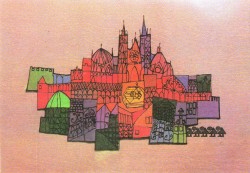 This personal story is to show to what extent and in what respect an artist may acquaint himself with a rather complicated instrument without being technically-minded. It is also meant as an introduction to the essence of my subject, an introduction that will allow me to pass on to what worries many animators; I have in mind their adaptation to new technical possiblities. Many film makers fear a confrontation with such sophisticated instruments as a computer or a video synthetizer. I am no exception here, having come across these fantastic machines on several occasions. I must have been impressed by their complexity or by the learned appearance of the programmers, for I cannot help thinking that my unscientific mind would not be able to exercise sufficient control over a computer. I might be able to overcome my fear if I could play with it for several weeks and had a book with basic information on how it works. I must admit that it would give me great pleasure to be able to shorten the production process of an animated film by the use of a computer. I think, however, that as things stand now the computer has very limited stylistic possibilities. Like John Halas I believe that computerized animated film will develop alongside the old kind without replacing it. It occurred to me when I was recently making a film combining actual photography with animated cartoons that the video-technique would considerably shorten the time of production. But here again I felt that I would not be able to exercise sufficient control over the picture. I am used to the solitary effort of a cottage worker. Production of a film in a laboratory with technicians paid by the hour would probably fail to spur my creative spirit. I may have been “spoiled” by years of work in conditions of uncertainty, which I experienced at the beginning of my drive to creative work.
This personal story is to show to what extent and in what respect an artist may acquaint himself with a rather complicated instrument without being technically-minded. It is also meant as an introduction to the essence of my subject, an introduction that will allow me to pass on to what worries many animators; I have in mind their adaptation to new technical possiblities. Many film makers fear a confrontation with such sophisticated instruments as a computer or a video synthetizer. I am no exception here, having come across these fantastic machines on several occasions. I must have been impressed by their complexity or by the learned appearance of the programmers, for I cannot help thinking that my unscientific mind would not be able to exercise sufficient control over a computer. I might be able to overcome my fear if I could play with it for several weeks and had a book with basic information on how it works. I must admit that it would give me great pleasure to be able to shorten the production process of an animated film by the use of a computer. I think, however, that as things stand now the computer has very limited stylistic possibilities. Like John Halas I believe that computerized animated film will develop alongside the old kind without replacing it. It occurred to me when I was recently making a film combining actual photography with animated cartoons that the video-technique would considerably shorten the time of production. But here again I felt that I would not be able to exercise sufficient control over the picture. I am used to the solitary effort of a cottage worker. Production of a film in a laboratory with technicians paid by the hour would probably fail to spur my creative spirit. I may have been “spoiled” by years of work in conditions of uncertainty, which I experienced at the beginning of my drive to creative work.
And so I come to the next point in my reflections: the animated film as an independent art.
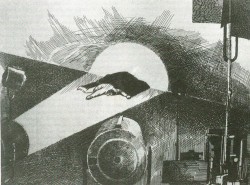 I think that two main aspects can be distinguished here: the aesthetic and the economic aspect of the problem. Let us have a look at the aesthetic aspect first of all. We must agree that it is extremely difficult to determine a priori the degree to which one art depends on another, especially in film art where such disciplines as music, comedy, photography, etc. are primary elements. In the case of animated films we must add other factors relating to visual arts (painting, sculpture, drawing, etc.). I do not think anybody has any doubts about the authenticity of film art. Other artistic disciplines which may become part of a film only play the role of ingredients and bear no responsibility for the nature of cinematographic art itself.
I think that two main aspects can be distinguished here: the aesthetic and the economic aspect of the problem. Let us have a look at the aesthetic aspect first of all. We must agree that it is extremely difficult to determine a priori the degree to which one art depends on another, especially in film art where such disciplines as music, comedy, photography, etc. are primary elements. In the case of animated films we must add other factors relating to visual arts (painting, sculpture, drawing, etc.). I do not think anybody has any doubts about the authenticity of film art. Other artistic disciplines which may become part of a film only play the role of ingredients and bear no responsibility for the nature of cinematographic art itself.
Similar is the case of the animated film. The elements of painting or drawing which go to make an animated film are not a value in themselves but elements meant to achieve a different form of artistic expression which lasts for a fixed period of time. But if this is so, you may ask, what is the place of kinetic painting? Is this also an art independent of painting as such since it also brings movement into the film? To such questions I would reply that enumeration of fine arts is an obsolete way of summing up man’s artistic abilities, for different kinds of art have more and more a tendency to penetrate one another or can be reduced to primary factors and become new disciplines. The definition of art less and less frequently allows us to strictly determine where art begins and where it ends. Consequently, how can we fix the borderlines between various disciplines of act and say to what extent one discipline of art depends on another?
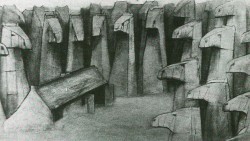 To dispute about the authenticity of animated films compared to other film genres is just as senseless as discussing the sex of angels. Some people will say that a film with actual photography perpetuates real action in order to present it in the desired context while an animated film is wholly a product of the imagination and a direct synthesis of this imagination. This is true, but on the other hand ths viewer, especially if he is an outsider, will experience the same physiological and psychological impressions when seeing both genres. In short, animation is only a different form of film art, a form that is subject to various influences or changes as a result of technological process, i.e., video-graphy, computers, holography and whatever may come. As far as the economic aspect is concerned, I think we can on the whole assume that the animated film is subject to the same laws as all the other film genres. If animated films are rather a marginal production, this is undoubtedly due to the fact that feature-length animated films capable of exercising an influence on the film industry are relatively few. I think however that it is just ar risky for a producer to produce a short animated film made by an artist as it is to make a short film with real-life photography. In any case it is obvious that it is becoming increasingly rare to see a short film in commercial cinemas. The fact that television can be a wonderful market for mass consumption but is a poor solution for films designed by individual artists has been known for a long time.
To dispute about the authenticity of animated films compared to other film genres is just as senseless as discussing the sex of angels. Some people will say that a film with actual photography perpetuates real action in order to present it in the desired context while an animated film is wholly a product of the imagination and a direct synthesis of this imagination. This is true, but on the other hand ths viewer, especially if he is an outsider, will experience the same physiological and psychological impressions when seeing both genres. In short, animation is only a different form of film art, a form that is subject to various influences or changes as a result of technological process, i.e., video-graphy, computers, holography and whatever may come. As far as the economic aspect is concerned, I think we can on the whole assume that the animated film is subject to the same laws as all the other film genres. If animated films are rather a marginal production, this is undoubtedly due to the fact that feature-length animated films capable of exercising an influence on the film industry are relatively few. I think however that it is just ar risky for a producer to produce a short animated film made by an artist as it is to make a short film with real-life photography. In any case it is obvious that it is becoming increasingly rare to see a short film in commercial cinemas. The fact that television can be a wonderful market for mass consumption but is a poor solution for films designed by individual artists has been known for a long time.
The third sector, known as the non-commercial sector, has at its disposal a large distributive potential and could make good the deficiencies of the other two distributive channels, especially with respect to animated films made by individual authors. But it is still bound by too many restrictions to be able to guarantee profitable production.
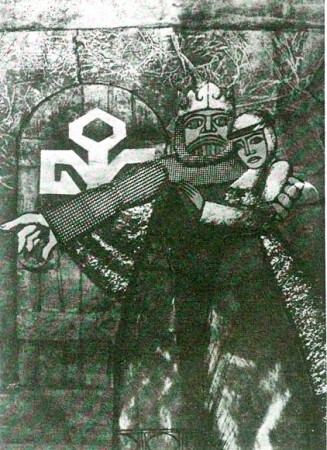 Since animated films are distributed by many companies, there is no planned policy of popularizing this medium in a better way. (This defect could of course be made good by ASIFA, which should not however replace distributors but supply information to distributors and all interested persons). But the market in question is insignificant at the moment, except for the United States, where in view of the large size of the country (especially as on the whole Canada is also part of that market) distribution can be conducted on a large scale. ‘This is not the case in Europe, where no country is large enough to make use of this sector. Moreover, customs regulations do not favour a free flow of films. Let us add that in North America institutions of great cultural utility (museums, libraries) have for long regarded the animated film as an artistic medium of no less importance than painting or literature.
Since animated films are distributed by many companies, there is no planned policy of popularizing this medium in a better way. (This defect could of course be made good by ASIFA, which should not however replace distributors but supply information to distributors and all interested persons). But the market in question is insignificant at the moment, except for the United States, where in view of the large size of the country (especially as on the whole Canada is also part of that market) distribution can be conducted on a large scale. ‘This is not the case in Europe, where no country is large enough to make use of this sector. Moreover, customs regulations do not favour a free flow of films. Let us add that in North America institutions of great cultural utility (museums, libraries) have for long regarded the animated film as an artistic medium of no less importance than painting or literature.
Our European conservatives fully deserve to be called conservatives. The animated film is barred from their temples and most probably they do not realize that the animated film can have different forms, not only that of a cartoon shown on television. ASIFA is an organization which could organize a large-scale informative campaign to wake up academic circles from their sleep.
To conclude these reflections I would like to express my deep conviction that the animated film is undoubtedly one of the best means of fully expressing human emotions and that it will find more and more adherents as science succeeds in reducing, if not eliminating, the boring and cumbersome aspects of this discipline and as man feels himself more and more free in the full sense of the word.
Raoul Servais
.
Illustrations:
1. Raoul Servais
2. False Note 1964
3. Sirene 1968
4. Chromophobia 1966
5. Goldframe 1968
6. To Speak or Not To Speak 1970
7. Pegasus 1973
8. Halewyn’s Chant 1976
9. Harpy 1978
